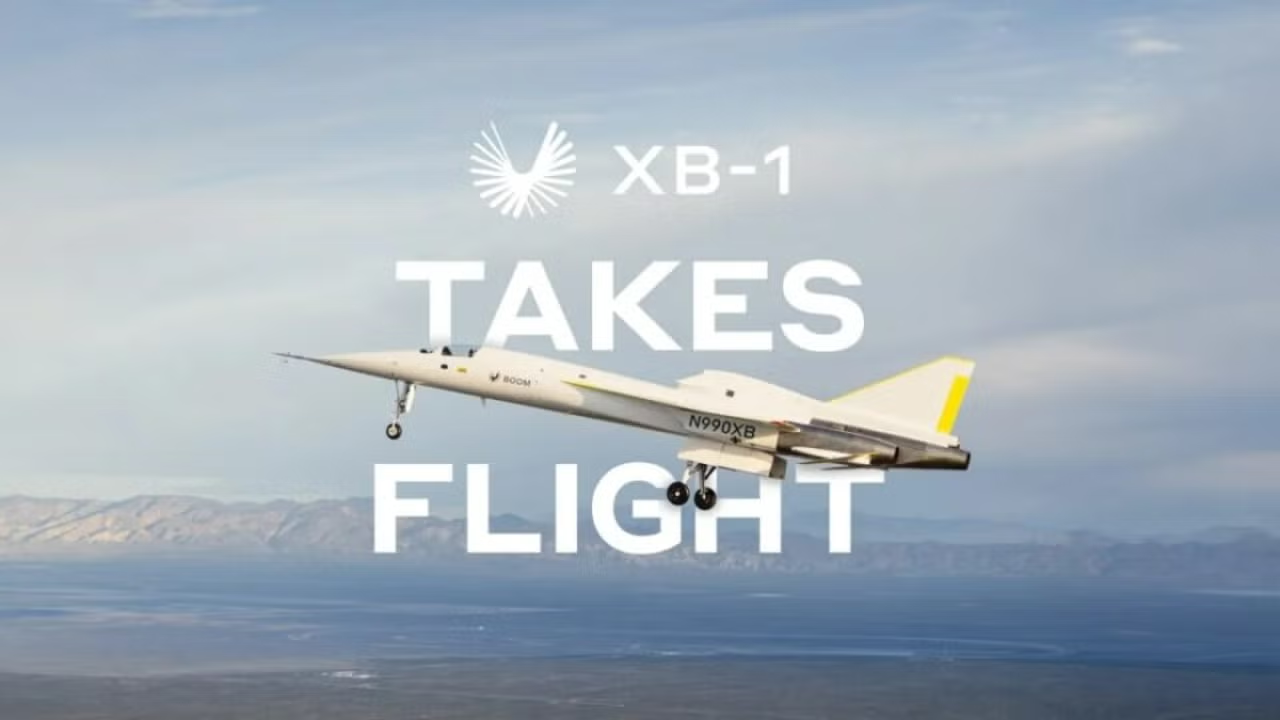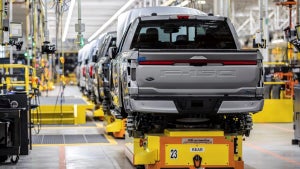News
This airplane wants to revive an old dream: supersonic travel
It is an old dream, but a prototype of a supersonic airplane takes off in the Mojave Desert.

- March 23, 2024
- Updated: April 11, 2024 at 8:58 AM

An independently developed supersonic airplane prototype by Boom Supersonic made its first flight on Friday, which represents a rather curious milestone within an industry that thought it had abandoned that path.
The vehicle, a supersonic airplane called XB-1, flew from the Mojave Air & Space Port in California, reaching an altitude of 7,120 feet (2.2 km) and a maximum speed of 273 mph (439 km/h). In a press release, Boom Supersonic stated that the initial test flight of the XB-1 aircraft met all of its objectives.
“The experience we have gained in achieving this milestone will be invaluable for the renaissance of supersonic travel at Boom,” said Bill “Doc” Shoemaker, Chief Test Pilot at Boom Supersonic.
Why a supersonic plane in 2024?
The XB-1 aircraft is a demonstrator intended to test the materials and aerodynamics of a larger commercial supersonic aircraft that the company calls Overture.
Boom is one of the few companies trying to revive commercial supersonic flights since the last flight of the Concorde in 2003. Their planes can carry between 64 and 80 passengers at a speed twice as fast as conventional commercial jets.
Boom claims to have received 130 orders and pre-orders from American Airlines, United Airlines, and Japan Airlines for the Overture vehicle, which it plans to deliver by the end of this decade.
Many milestones ahead
Boom Supersonic was founded a decade ago, in 2014. It first rolled out the XB-1 prototype in October 2020. At that time, the company said it planned to begin a flight testing campaign during the third quarter of 2021. It is unclear why Boom missed that deadline by two and a half years.
The company plans to fly the XB-1 to learn the lessons of supersonic flight with a lower-cost vehicle and incorporate these findings into the final design of Overture. Technology can only be tested to a certain extent on the ground and in wind tunnels, so the company needs to fly now to mature its design.
After Friday’s flight, the company declared that the aircraft’s development team will continue to expand the flight envelope to confirm its performance and handling qualities up to Mach 1 and beyond.
A key element of the Overture aircraft that the XB-1 prototype is not testing is the engines. The XB-1 is powered by three GE J85-15 engines, a turbojet that has been in service for several decades. Boom Supersonic is developing a new engine, a medium bypass turbofan engine called Symphony, for the Overture aircraft.
Previously, the company showcased a one-third scale design model of Symphony, but has not disclosed any information about hardware development testing. The additive manufacturing engine has a power of 35,000 pounds.
Is it possible that we will see supersonic planes flying again, covering distances in a third of the current time? Everything seems to indicate that yes, the question is whether there will be room in the market and if they will pass all safety tests.
Journalist specialized in technology, entertainment and video games. Writing about what I'm passionate about (gadgets, games and movies) allows me to stay sane and wake up with a smile on my face when the alarm clock goes off. PS: this is not true 100% of the time.
Latest from Chema Carvajal Sarabia
- The new generation of AMD, the RX 9000, is everything we gamers wanted
- Volkswagen makes it official: this is the anticipated and affordable ID.1 that aims to compete with China
- The Importance of Using Licensed Software: Risks and Benefits
- Kia wants to launch an even cheaper EV and it will be called EV1
You may also like

Ford recalls 950 electric F-150 Lightning trucks over fire risk
Read more

Elon Musk Aims to Double Tesla’s U.S. Production: 1.4 Million Vehicles Annually
Read more

If you've always wanted swords to be something other than swords, the mods for Kingdom Come: Deliverance 2 give you that option
Read more

Silent Hill f does not have a release date, but it already has system requirements
Read more

The study of Vampire Survivors creates its own official wiki for the game
Read more

The studio behind My Hero Academia creates an anime exclusively for Crunchyroll
Read more